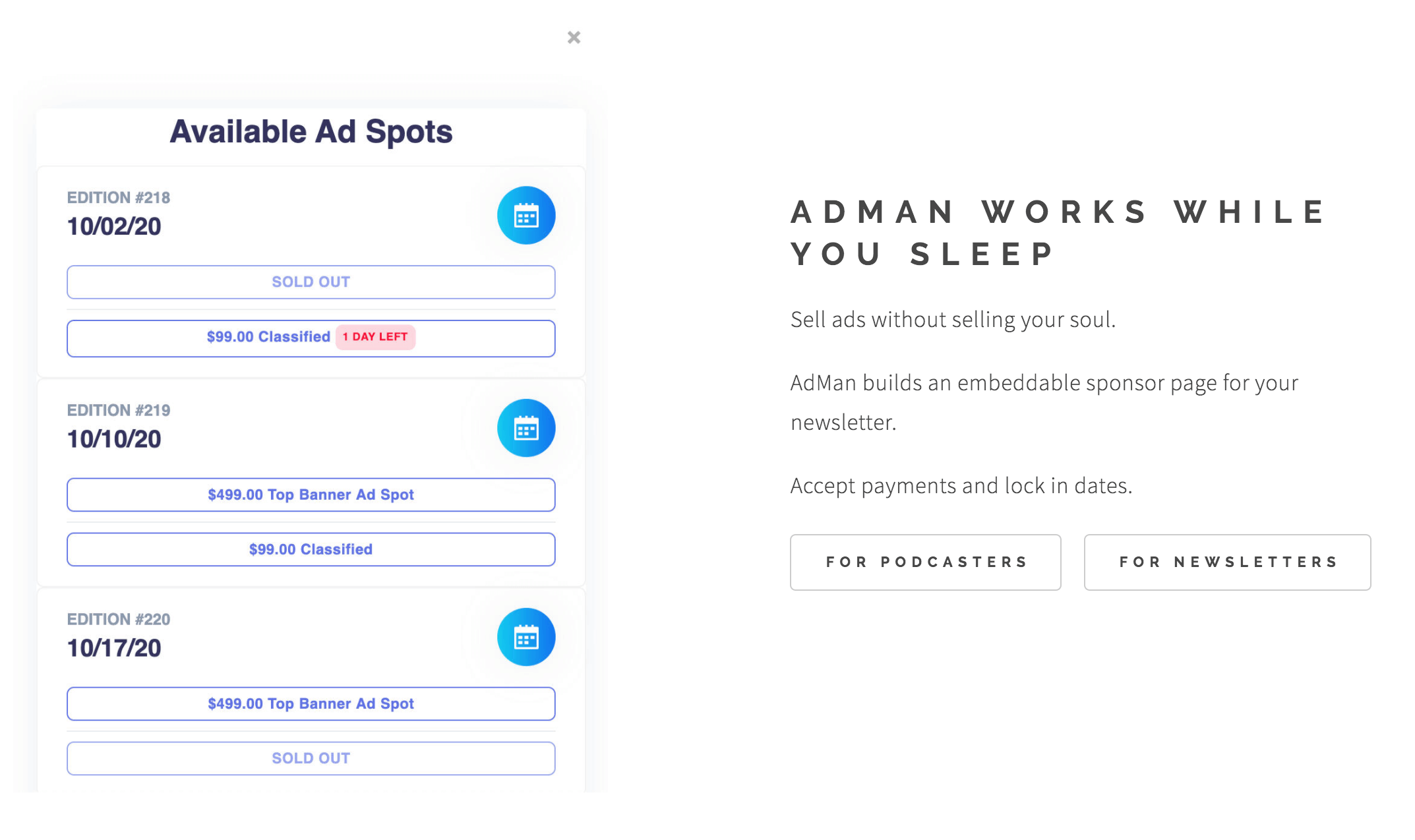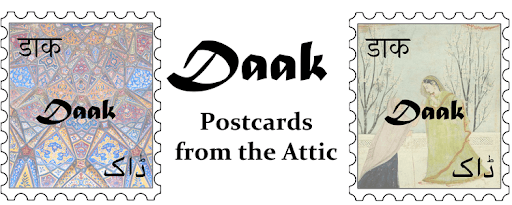Everything He Launches Is A Newsletter
Hi there! Who are you and what are your newsletters about?
Hi, I'm Andrew Kamphey and I run Influence Weekly and Better Sheets. Your readers might be most interested in Influence Weekly since it’s the most “successful” at the moment.
I've been running Influence Weekly for two and a half years. It’s about the influencer marketing industry and has readers from marketing firms, agencies, and large corporations.
It's a profitable newsletter with a total of 6,000 subscribers and has on average gained about 50 subscribers per week.
Better Sheets is a newsletter where I send daily Google Sheet tips. I started about one month ago and it currently has just over 100 subscribers. It’s not exactly what someone with experience running a newsletter should be doing, but I thought it would be interesting to do a daily newsletter.
For years I’ve tried to convert Influence Weekly to a daily newsletter but could never pull the trigger. At most I’m sending about 3 newsletters per week, including the main weekly one and two for paid subscribers.
.png)
When did you get started writing your first newsletter? What motivated you to get started?
I started my first newsletter the last week of November 2017. I had been working in the influencer marketing industry for about a year at the time. I had also been a creator and influencer myself for a few years before that. The actual reason for starting the newsletter was to collect what I was already reading.
I looked for sources that were data-driven and concerned about the industry as well as individual influencers and individual deals but I couldn't find one. I couldn't find a single source that collected all of the interesting articles that I had been reading. Ultimately, I collected 70 sources which I used to start my newsletter with and it organically became the mission or rather the ethos of my newsletter. I read 100 articles a week and curated 10 to 20 of the best ones for readers. This was my rallying cry for a while.
Now that I'm established and people know me, I've asked for interesting case studies and interesting work for the last two years. I now get submissions a lot but it doesn't supplant all of my content. Still to this day I look for and source great articles the way I've always done. Thankfully it's not one hundred percent of my newsletter every single week. I get about four to five emails a week from readers, people pushing me their articles or releases or interesting stuff.
I also have developed a lot of my own kinds of materials that I wish existed and I publish them frequently. I wouldn't say they are blogs nor writing, they are more like infographics and different types of content than most newsletters have. For instance I released Influence 100 which is the 100 most influential people in influencer marketing. This list has put me and the newsletter itself on the map for many PR firms and many people who are interested in this industry. I purposefully made that list very useful. The list includes LinkedIn profiles and why people are influential; it doesn't just list the names. It's incredibly useful for anyone in or outside the industry that wants to know about it very quickly.
Another product I've made is CreatorScape, which is a chart of all of the companies that help creators online make money. Last year I made the chart myself. This year I made it with influence.co and they released it.
Do you have a monetization strategy for your newsletters?
Influence Weekly makes its money from advertisements, paid subscribers, donations, and info products that I sell.
The newsletter Better Sheets makes its money from selling lifetime subscriptions to tutorial videos that I make about Google Sheets.
What do you do outside of writing your newsletters?
When I first started I had a full-time job in the Influencer Marketing industry. I was in the position of pricing and analytics of influencer campaigns. The newsletter afforded me the ability to leave that job in late 2018. For all of 2019 I was trying to make my own web apps for creators and influencers. Ultimately that endeavor failed.
I’ve started a new company to help other newsletter monetize called HypeLetter. My co-founder also runs his own newsletter and we are building tools to help creators monetize. In late 2019 we were doing ad sales for newsletters and found some interesting challenges doing that on behalf of others. Previously we had been running our own sales and individually we were each successful. The challenges included lots of communication and dropped communication because we were relying on email.
We think there's a better way to do business and if we can solve this for ourselves and a few newsletters we work with I think we can make a huge impact on other newsletters and enable them to monetize in an ethical and better way. We're creating AdMan, a tool to help newsletters sell more ads.

What are some of the difficulties you’ve encountered in running your newsletters?
I probably have very unique difficulties because I am slightly technical but not fully technical. And I want to provide new and interesting experiences for readers. At least beyond what they get by email every single week.
One of the most interesting things I did, successfully, was to create a library of articles that I share. Every newsletter usually has a topic for each edition. Yet in mine it’s always a list of great articles to read. It's like drinking from a firehose. Then someone who comes late to the firehose doesn't even get to try to drink.
Not everything I've launched has worked out. I've started three other newsletters (landing page and tried sending some editions):
- Micro Funds: News about VC funds under $100M
- Mable: Instagrammable Airbnbs around the world for less than $100 a night
- Everything Marketing: Excerpts from a different newsletter on a different type of marketing every day
What have you learned through writing your newsletters?
I definitely have learned more about the industry that I cover because I read more and I'm forced every week to read. But that probably would have happened no matter what I had done if I had a newsletter or not. I was already reading a hundred articles a week about the industry.
That probably is something I learned, that you can't run a newsletter unless you actually enjoy reading and writing. I know that sounds really simple and may be stupid but if you don't enjoy writing, don't write. And I don't mean don't write a newsletter, I mean like there's other ways to do content and to make content. You can make a YouTube channel, you can start a podcast, you can write a blog if you don't want to write consistently.
Nobody is expecting a blog to be delivered to their email address whereas an email newsletter is expected. I see so many people starting newsletters but not on a schedule. I don't think that's really a newsletter, that's just a notification of your blog.
What’s your favorite part about writing your newsletters?
Very early on in my newsletter I would write about the week's trends that I saw. And initially that brought me a lot of personal joy but I noticed that as I wrote less and less and let the articles do the speaking the newsletter’s impact and value rose. This is probably for two reasons: first being that my writing might not have been so good then, the second being that you let your content do the heavy lifting. My job for at least the first two years was to curate. And learn. And watch. And listen.
In particular my newsletter is a curation newsletter and so I see lots of things and I probably have seen much more than people working in my industry. I think writing a newsletter has definitely made me a more knowledgeable person but it hasn't really helped me become more insightful. I've had to do that on my own. It’s a learned aspect. It’s not a byproduct of the newsletter itself.
What does the process of writing your newsletters look like for you?
I have set myself up recently to make the writing process easier. And again, I don't write necessarily, I curate and summarize. Every week during the week I go through many sources and save with a bookmarklet that I made myself links and web pages into a Google sheet that is sorted by timestamp.
I take 3 to 6 hours on Thursday morning to make the newsletter. At that time I'll review any and all articles that I've saved. I will also take 2 to 3 hours to find more articles. This probably could be done in 1 hour if I took more time during the week to curate but everyone's different. It just feels good to get into a nice flow for 2 to 3 hours.
I create a tab and put all the articles on that Google sheet tab. Then I move around the sheet into the sections that I have. I have four sections right now. I make up sections if I need to week to week. But I have 4 mainstay ones that I go to all the time.
Then I copy and paste each individual title link and description into a MailChimp template that I've iterated over the last 128 weeks.
I schedule the newsletter for Friday at 9 a.m. eastern time. Then I go into Substack and send a preview to paying subscribers. And then take a few minutes to schedule some LinkedIn and Twitter posts for the next week about the newsletter that I just curated.
What newsletters do you like reading?
Newsletters I subscribe to that I LOVE:
What goals do you have for the future?
Previously I had a searchable library of all articles. I am updating that library and creating a new members-only or paid subscriber-only place for them to search through the library of articles. There is a special thing I'm adding to this where you can search for individual terms or trends and then see how many articles over the past two years have been curated of those to see if that trend or topic has risen in popularity or decreased in popularity. This is pretty unique because the trends and charts on topics and trends will use data from Google trends or social media mentions.
Where can readers go to learn more about you and your newsletters?
Better Sheets: BetterSheets.co
Influence Weekly: InfluenceWeekly.co



.png)